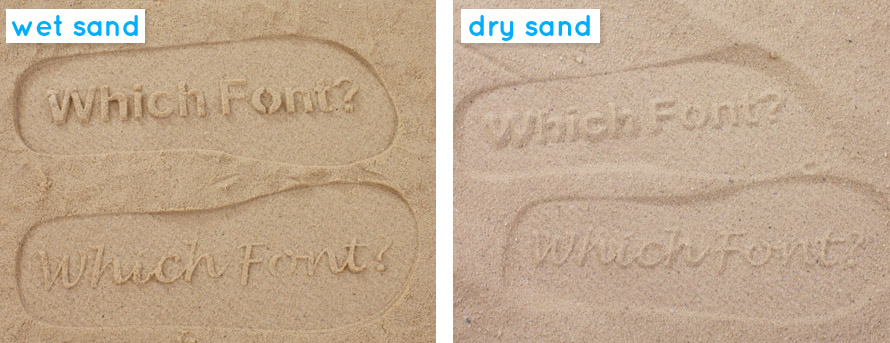Designing Your Flip Flops So They Create Great Sand Imprints
We want all customers to be happy with their purchases of FlipSidez. Occasionally we will receive complaints from customers stating that their flip flops did clearly imprint their design in the sand. Sometimes this is true. There are several factors that influence how well a given flip flop design will imprint in the sand. These factors include, the grit size and wetness of the sand, the weight of the person wearing the flip flops, and last but not least, the design imprinted into the flip flop soles. Some of these we have no control over, such as how much force is being applied by the flip flops on the sand due to the wearer’s weight. However, other factors, such as where we choose to wear the flip flops, and the design that imprinted into the bottom of the soles, we do have control over. These two factors are what this post focuses on.
Customers have the most control over the design that is on the bottom of the soles. As a general rule, the bigger each imprinted character is, the better the imprint it will make upon sand. We have the ability to imprint very small letters on soles, but this does not necessarily mean that you should try to fit an entire paragraph onto your pair. Characters over an inch tall are ideal. If you can use all capital letters, this further improves the imprintability of those letters. To demonstrate this we created two versions of the same bridal design on a pair of US women’s 7.5-9 flip flops. Notice how much better the imprints are for the design which uses fewer characters in all capital letters.

The thickness of the letters themselves also plays a role. As of today we have 3 fonts available for use in our design shop. Of these three fonts, Lintsec and Arial create the best sand imprints. This is because the characters, used for these fonts, have thicker lines. Script fonts, such as our Lucida Handwriting font, are popular for wedding designs and we felt we needed to offer one of these. However, when using a script font it is ideal that you make the characters larger due to the thinness of the lines used for this font. To demonstrate this we created another pair, also size US women’s 7.5-9, that has the same design on each sole, “Which Font?”, but shows the difference between the effectiveness of the fonts when imprinting in sand.

Another factor, which plays a lesser role than design but is important to consider, is the sand. The coarseness, wetness, and even the color, of the sand can influence the imprint. We’ve tested our flip flops on various beaches and found that fine grit sand found on a Caribbean island imprinted much more readily than coarse sand found on the Jersey shore. While the sand found on a Florida beach imprinted well, it was harder to see the imprint since the sand was very white and shadows were less apparent. The wetness of the sand is very important. Imprints made on dry sand will not show up as clearly as imprints made in wet sand. This is because dry sand will crumble. Water is needed to hold the imprinted sand together. You can’t build a sand castle with perfectly dry sand. When you walk down the beach you will find that the clearest imprints occur in the wet band of sand that is lapped by the ocean waves. The closer you get to the water, however, the harder the sand can become. Again, if you have smaller characters in your design, they may not imprint well on this harder very wet and flat sand or even in the dry sand.
We hope this information will help you when designing your flip flops. Remember, when it comes to creating perfect sand imprints, less is more. Use fewer letters so you can make them as big as possible.
Now that you know the basics of creating a great sand imprint flip flop design, design your pair using our website’s flip flop design tool




